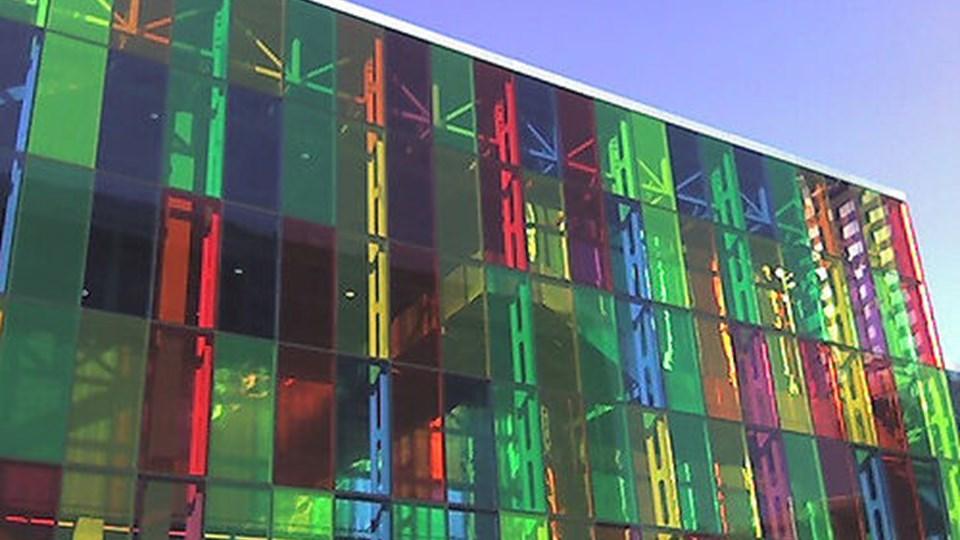Bird-Friendly Design
Windows and other glass components of a building can be dangerous to birds, which have poor depth perception and are unable to notice architectural context clues that humans use to avoid collisions with solid surfaces. Depending on location, lighting, and time of day, glass can appear highly reflective or completely transparent to flying birds. Nighttime lighting in and around buildings can also confuse birds’ natural migratory patterns.

Within the design and construction industry, there are increasing calls for structural and operational changes, such as incorporating bird-safe glass in both new construction and renovations and instituting a “lights-out after hours” policy when office buildings are unoccupied, particularly during migration season in the spring and fall.
Installing bird-safe glass is an important but often overlooked element of sustainable building design, which by definition aims to minimize a building’s impact on the natural environment, including native wildlife. Recent advancements in bird-safe glass are making it easier to combine functionality with aesthetics, energy efficiency, and solar control performance.
These practices offer businesses a “win-win” by minimizing disturbances to birds while also saving on energy use.
How These Strategies Work
Bird-friendly strategies for windows deter birds by making glass more visible, making it appear as if spaces are too small to fly through and/or by reducing reflections. Biologists have determined that most birds will only fly through horizontal spaces two inches or higher and vertical spaces four inches or wider; therefore, window patterns should have empty spaces no larger than 2” x 4” as an effective deterrent.
Types/Materials/Approaches
A variety of glass and window types and approaches are available to create visual barriers for birds, thereby reducing mortality from collisions.
Acid-etched, fritted, or frosted glass uses ceramic lines, dots, or other patterns. This not only reduces the risk of bird collisions but also increases energy conservation by reducing solar heat gain and glare while simultaneously reducing cooling loads and allowing natural lighting of buildings. Source: Threats to Birds: Collisions (Buildings & Glass) | U.S. Fish & Wildlife Service.
Existing glass can be frosted by on-site sandblasting during remodeling. Existing building and home owners can also add designs or decals to window panes. Vertical stripes are the simplest pattern able to deter the large majority of birds, while covering the smallest window surface.
Additionally, shutters, balconies, overhangs, grilles, or screens can reduce the amount of visible or reflective glass without interfering with the inside view. Window tape is available from the American Bird Conservancy.
LEED Certification Points
The U.S. Green Building Council’s LEED certification program offers points for projects incorporating features that help to deter collisions. LEEDv4 offered (1) point for new building and design construction that meets Light Pollution Reduction and Building façade and site structure requirements.
LEEDv5 launches in 2025, offering two options to earn points:
- O+M credit Light Pollution and Bird Collision Reduction (1 point)
- BD+C credit Biodiverse Habitat. (1 point)
Project teams earn this credit by (1) preserving 40% of greenfield area on the site by protecting these areas from all development and construction activity, and/or (2) restoring previously disturbed areas of the site and following soil restoration and vegetation restoration requirements, in addition to (3) using bird-friendly glass.
Related Links
American Bird Conservancy
Bird-Friendly Building Design Guide
How LEED v5 promotes ecological conservation and restoration
LEED’s Green Building Rules Are Becoming More Bird-Friendly—Do They Go Far Enough? | Audubon
Threats to Birds: Collisions (Buildings & Glass) | U.S. Fish & Wildlife Service.
Top banner photo: Colored glass (flickr: opencontent)
